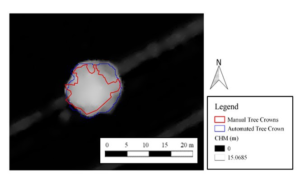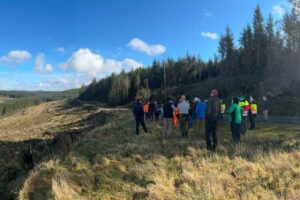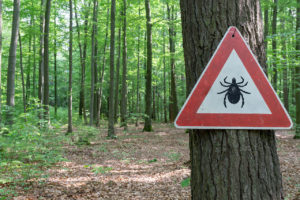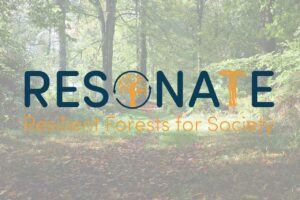2Excel geospatial is a sponsor of the 2018 National Tree Officers Conference (NTOC).

This article presents research conducted to investigate the potential capabilities of airborne hyperspectral imagery for the assessment of ash dieback in a hedgerow environment. Hyperspectral imagery consists of hundreds of narrow bands across the visible and infrared regions of the electromagnetic spectrum providing a higher level of spectral detail than traditional colour imagery.
Study Site
The study site consisted of a roadside hedgerow bordering agricultural land (Figure 1) in Northamptonshire. The site was selected due to the variability in ash dieback severity and accessibility for ground surveying.
Individual trees along the hedgerow were subject to ground survey to determine species. European ash, which accounted for the majority of trees surveyed (86%), were subject to additional assessment to determine the percentage of crown dieback (recorded in 5% intervals).

Airborne true-colour (0.07 m) and hyperspectral (0.33 m) imagery was acquired for the study site on the 25th August 2017. Following acquisition, several processing steps were undertaken to provide analysis ready imagery and a digital surface model.
Ash Dieback Assessment
An automated individual tree crown (ITC) delineation was conducted using the digital surface model derived from the imagery. This stage of the process enabled the generation of polygons to represent each tree crown in the hedgerow (Barnes et al., 2017b)
The spectral reflectance for each tree were extracted using the tree crown polygons. 64 vegetation indices were also extracted utilising the narrow spectral bands provided by the hyperspectral imagery. These vegetation index values were used to classify the presence of dieback in ash trees at the study site.

Results
The reflectance spectrum of ash trees with and without crown dieback are displayed in Figure 3. Ash trees which exhibited crown dieback (5 – 50%) demonstrated a suppressed reflectance in the near-infrared (NIR) region. A slight increase was also observed in the green and red reflectance of ash crowns affected by dieback. These variations in reflectance are used for the identification of dieback and support the results of previous.
The classification of dieback presence (no dieback vs dieback) in ash trees at the study site yielded an overall accuracy of 87%. Vegetation indices calculated using the reflectance values from the green/red and NIR regions of the spectrum were particularly important for the dieback classification. Figure 4 provides a visual representation of the four most useful vegetation indices for the identification of dieback along the hedgerow.
Concluding Remarks

Whilst this highlights the potential capability of this remote sensing approach to assess disease in at the selected study site, transferring the approach across different environments, scales, tree species, pests and pathogens is more complex. Selecting the most appropriate remote sensing technologies for a specific disease detection challenge requires an in-depth understanding of the capabilities and limitations of different sensors and platforms and the symptom expression associated with particular agents of disease and stress in specific tree species (Lausch et al., 2016).
Follow NTOC @TheICF #treeofficerUK
Disclaimer: The views and opinions expressed in this article are those of 2Excel geospatial and do not necessarily reflect the views of the Institute of Chartered Foresters.






